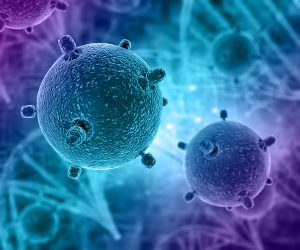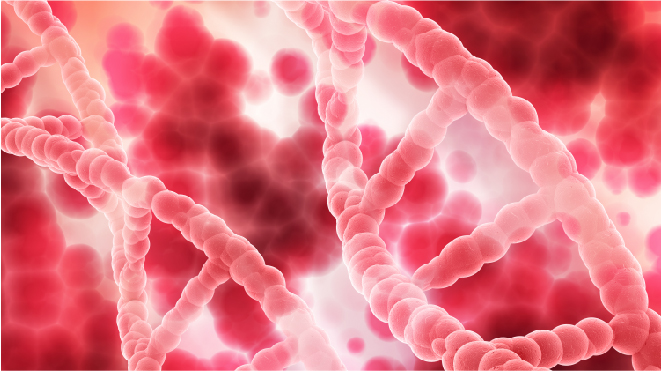The blood cells are produced in the hollow of the bone, in a soft gel like part called bone marrow. The cells produced are primitive ones called stem cells and these are pluripotent in nature. Meaning, they have the potential to develop into all types of blood cells. The process of the stem cells differentiating into different types is called hematopoiesis. The stem cells differentiate into two different cell groups- the myeloids and the lymphoids. The lymphoids are responsible for our immune system while myeloid group differentiate further to form red blood cells, white blood cells and platelets.

Leukemia, a type of blood cancer, is caused by rapid production of abnormal cells and the ability of the bone marrow to produce cells is impaired. The progression of leukemia is classified as acute or chronic. The acute type spreads very fast and requires immediate treatment whereas chronic spreads slowly and the treatment need not be immediate. Depending on the cell group affected and the progression of cancer, leukemia is of four main types:
- Acute Lymphocytic Leukemia (ALL)
- Acute Myelogenous Leukemia (AML)
- Chronic Lymphocytic Leukemia (CLL)
- Chronic Myelogenous Leukemia (CML)
What happens in Chronic Myeloid Leukemia:
In CML, the myeloid cell group is affected. In the process of cell differentiation called hematopoiesis, the stem cell differentiates into myelogenous and lymphoid groups. These cells then develop into myeloblasts and lymphoblasts, the suffix blast representing cells still in formation. The blasts mature into cells with their functionalities and are then referred to with the suffix -cytes, myelocytes and lymphocytes. The myelocytes differentiate further to form megakaryocytes, erythrocytes, monocytes, neutrophils, basophils and eosinophils. The erythrocytes form red blood cells, megakaryocytes form platelets and the others are all white blood cells.
The myelogenous cells mutate and form leukemic blasts which do not function as normal cells and so cannot make normal healthy cells. Thus in chronic myeloid leukemia, the production of red blood cells, platelets and the white blood cells is affected.
CML makes up to about 10% of all the leukemia cases. It mostly affects older people with the average age of developing leukemia being 64 years.
Risk factors:
Risk factor is a condition that is known to increase the chances of one developing the disease, but the presence of a risk factor does not imply that one has/will get the disease. The exact causes of CML are not known and only a few risk factors have been identified too. Heredity, smoking, diet and most infections do not seem to increase the risk of CML. The following are some of the risk factors of CML:
- Age: The risk of developing CML high above 50 and increases with age, with the average age of patients diagnosed with this cancer is around 64 years.
- Gender: The disease is noted to be more common in males than in females though the exact reason for this is not known.
- Radiation: High intensity radiation is observed to be a risk factor for CML, such as in cases of atom bomb survivors, radiotherapy for a condition called ankylosing spondylitis. However, radio or chemotherapies for other types of cancers is not known to cause CML.
Symptoms:
CML does not show obvious signs and symptoms in its early phases and one might live with this disease for months or even years without realizing it. Some symptoms are:
- Weakness or fatigue
- Night sweats or chills
- Weight loss
- Fever
- An enlarged spleen which can cause pain or give a sense of fullness of the stomach which in turn may decrease the appetite
Stages:
For determining the staging, the physician examines the blood and bone marrow tests of the patient and estimates the number of diseased cells. The stages include:
- Chronic: This is the first stage of CML and is characterized by mild symptoms like fatigue, weakness etc.
- Accelerated: During the chronic phase, if CML has not responded to treatment well, it becomes more acute, which leads to the accelerated phase.
- Blastic: Being the most aggressive stage of CML, it has more than 20 percent myeloblasts or lymphoblasts. Symptoms are just like those of acute myeloid leukemia.
Diagnosis:
The following tests may indicate the presence of chronic myeloid leukemia.
- Blood tests: Complete blood test can show high levels of white blood cells than the normal long before the symptoms of CML are observed. In more advanced stages, low levels of red blood cells can be noted.
- Bone marrow test: Bone marrow biopsy or aspiration (removing the bone marrow sample by a thin needle) can reveal the presence of cancerous cells in the bone marrow.
- Cytogenetics: Cytogenetics is a study of genetics and inheritance with regards to chromosomal behaviour.
Treatment:
The major treatment options for CML are:
- Targeted therapy: This treatment targets genes, proteins or tissues that contribute to growth of cancer and it aims to block the growth and spread of cancer cells. For CML, the target is an enzyme called BCR-ABL tyrosine kinase and the drugs that target this enzyme are called tyrosine kinase inhibitors or TKIs.
- Stem cell transplantation: The replacing of cancerous blood cells in the bone marrow by hematopoietic (undifferentiated) stem cells is called stem cell transplantation. Used in patients not responding to TKI or in patients with CML in Accelerated phase or Blast crisis.
The exact course of treatment is decided based on the stage of CML and the patient’s response.
The treatment for chronic phase often starts with targeted therapy, followed by stem cell transplantation if needed. Targeted therapy is less effective in accelerated phase and stem cell transplantation is preferred. Targeted therapies are less than successful in blast phase and chemotherapy is needed in most cases.
Survival rates:
The survival rates of patients with cancers are usually measured in terms of 5 year survival rate, a measure that shows how many people live up to five years after first being diagnosed with the cancer. The survival rate for CML has more than doubled from 31% in early 1990s to 68% in the years 2007-13. The survival rate for a certain drug named imatinib is about 90% and research is being carried out to improve the treatment methods.




